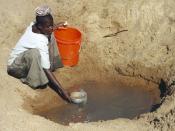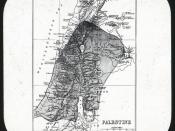Ramallah, West Bank, PalestineThe population of West Bank is roughly 2,385,000 people. By the beginning of the twentieth century Ramallah was a lively agricultural city. The British Army dominated Ramallah in December of 1917, and the British Mandate in Palestine started in April of 1920 and lasted until 1948. The regions economic increase in the 1920s proved to be a major enhancement in living standards for Ramallah's well-off residents. The poorer residents had little benefits from safe water and land.
Water PollutionFreshwater supplies in West Bank now are barely sufficient to maintain a quality standard of living. As the populace in this area continues to expand and economic development grows larger, the water supplies will be damaged even further. Luckily, there are many experienced, efficient measures accessible for preserving and protecting the lands water and its supply. The people must work together to ensure that environment are preserved and sufficient water supplies are continuous, not only for the near term, but also for the generations yet to come.
There is a great deal of pollution in the waters in Pakistan and surrounding areas. Around two fifths of the inhabitants have access to nontoxic drinking water. Over half the population does not have any access to sanitation. Water pollution comes from raw sewage and agricultural run off. Bottled water is currently not obtainable to the greater part of the population. Due to the pollution the inhabitants have little natural fresh water resources, like lakes and rivers. The main river is the Indus River, it runs around 800 miles from China to the Arabian Sea. Some of the surrounding rivers are the Gilgit, Gizar, Hunza, Gumal, Zhob, Kabul, Kunar, Sutlej, Beas, Chenab, Jhelum, and Ravi.
The Cause is the use of fertilizers, chemical pesticides and sewage that run off into the...


